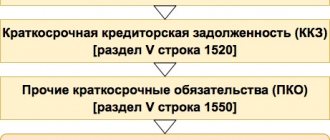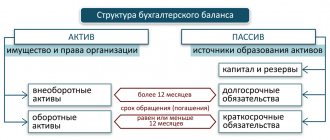For certain reasons, it happens that a company is unable to receive funds for shipped products for a certain period of time. It is precisely in these cases that it is necessary to reflect such operations in the 45th position. Today’s topic is devoted to the questions of what finished products are, what should be understood by shipped goods and how they are sold, what is the purpose of account 45 in accounting, what accounting records are kept, and we will also look at one of the practical examples.
Definition of finished products and goods
Upon completion of the production process, the company obtains a finished product from the raw materials used. This product is fully stocked, transferred to the warehouse and is ready for sale.
Finished products should be perceived as part of the inventory that will subsequently be sold and meet the required technical parameters and quality standards.
Goods that were received or purchased from business entities or citizens for subsequent sale can also be perceived as part of production inventories.
If we consider the flow diagram of the finished product, it consists of the following stages:
- receipt of a batch of product at the warehouse;
- shipment of the finished batch to consumers.
When maintaining accounting records, a unit of a finished product is determined by the company in such a way that the company's management can obtain adequate information about the status of these inventories, as well as ensure adequate control over their movement and balances. Finished products enter the warehouse from the production workshop under the responsibility of the material person.
Commercial products
Sgpn, (8-4) where Sop is the cost of products shipped in the reporting period, rub; C tp is the cost of marketable products produced in this period, ruble; Sgpn, Sgpk are the balances of marketable products, respectively, at the beginning and end of the reporting period (at cost ), rub. This formula is used for calculation. Based on external accounting statements, only the cost of marketable products produced since the beginning of the reporting year can be calculated. Balances of finished products are determined according to Form 1 “Balance Sheet” at the beginning and end of the period, on line 215 “Finished products and goods for resale” (remaining stock). It should be noted that the assessment of the volume of marketable products produced by the enterprise is approximate. The reason is that line 215 of Form 1 takes into account the balance of “goods for resale” in the total amount. If the enterprise is engaged, in addition to production, also in trading activities, these balances exist. For the accuracy of the calculations, they must be excluded. However, it is impossible to do this using external accounting data. After calculating the cost of marketable products, you can make an approximate estimate of it in selling prices (this is one of the traditional tasks of analysis). An accurate assessment is impossible in this case, since in Form 1 the balances of finished products (line 215) are taken into account only at their own cost. For this purpose, the coefficient for converting the cost into selling prices (excluding VAT) is calculated: Kp = Vrp / Srp, (8-5 )where Vrp is revenue (net) according to Form 2 (line 010), rub; CRP - cost of goods sold, rub. Then the approximate volume of marketable products in selling prices (excluding VAT) in the reporting period can be calculated as: TP = Kp*Stp • (8.6) By analogy, other indicators can be recalculated in selling prices. Gross output is the total number of products (works, services) that were in production during the reporting period. At the same time, the degree of their readiness does not matter: the gross output includes both fully manufactured products and work in progress. The cost of commercial and gross output is related by the following relationship: Svp = Stp + Snzpk
Snzpn, (8-7) where Svp is the cost of gross output of the reporting period, rub; Snzpn, Snzpk are the balances of work in progress (incompletely manufactured products), respectively, at the beginning and end of the reporting period (at cost), rub. This formula is used for calculation.
Goods shipped are...
This definition should be understood as those inventories, the proceeds from the sale of which cannot be recorded in the appropriate accounting records.
If we talk about Form No. 1 of financial statements, then the price of finished products shipped to customers is recorded on line 080 of the balance sheet. In this line, the accountant enters the debit balance of account 45 at the end of each reporting period.
In general, property rights to certain inventories are transferred to the customer after their delivery last. However, there are some exceptions to this general rule:
- in the case of transfer of goods in accordance with an exchange agreement (in this case, the buyer acquires property rights only after the counter shipment has been made;
- if the goods are transferred under a purchase and sale agreement, which provides for a special procedure for transferring ownership. According to such documents, the person purchasing the goods receives ownership of it only after certain conditions are met, for example, payment of its cost or delivery to the designated point;
- in case of transfer to an intermediary for further sale. In this case, we are talking about a commission, commission or agency agreement.
Bargain transactions
According to civil law, under a commodity exchange agreement (that is, an exchange agreement), each party to the transaction undertakes to transfer one or another product to the other party. Thus, the parties to the contract act as both a seller (in relation to the goods being transferred) and a buyer (in relation to the goods received in exchange) simultaneously. Unless otherwise provided by the exchange agreement, the ownership of the exchanged goods passes to the parties acting as buyers under the exchange agreement, simultaneously after the fulfillment of obligations to transfer the relevant goods by both parties. Until this moment, the goods received from the buyer are accepted by the institution for safekeeping (the receipt of goods is reflected by an increase in off-balance sheet account 02 “Tangible assets accepted for storage”) and are considered the property of the seller. The cost of goods is reflected in off-balance sheet accounting at the prices specified in the documents of the transferring party.









